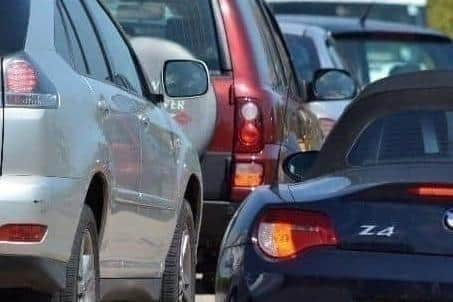Residents set to benefit from stronger voice on road schemes as government announces new plans
and live on Freeview channel 276
The Department for Transport has today (March 17) published draft statutory guidance for councils in low traffic neighbourhoods (LTNS), making clear that they must gain ‘buy-in’ from residents, businesses and the local emergency services when implementing new traffic schemes.
This, a spokesperson for the department has said, could involve in-person events, online engagement and leaflet drops designed to involve the whole community in the consultation process, and it is hoped this will force councils to reckon with the suitability of low-traffic schemes, as well as levels of local support, before implementing them.
Advertisement
Hide AdAdvertisement
Hide AdThe new guidance is expected to raise standards for low traffic neighbourhoods, and should come into force this Summer.


"Local authorities are expected to follow the guidance and ensure local people support their plans. Recent examples where councils have implemented these schemes without public support have been shown to cause disruption and have unintended negative consequences,” a Department of Transport press release says.
“If local authorities fail to deliver sensible road schemes that work for local people they could see future funding withdrawn, and under powers from the Traffic Management Act, the Government could ultimately take control of an authority's roads where they are deemed to be widely mismanaged."
A public consultation will also be launched this Summer on measures including the removal of local authorities’ access to Driver and Vehicle Licensing Agency (DVLA) data, which they use to enforce schemes by camera.
Advertisement
Hide AdAdvertisement
Hide AdCouncils have also received stronger guidance on setting 20mph speed limits, reminding them to reserve them for sensible areas only – like outside schools – and to do so only with the appropriate local support.
Today’s action, the department has said, is supported by which highlights that only 13 per cent of residents have responded to council’s consultations on LTNs, and that just 18 per cent feel their views have influenced decisions.
The report also found that local authorities operating LTNs issue an average of 36,459 Penalty Charge Notices per scheme, with the highest number of Penalty Charge Notices issued for a single LTN scheme exceeding 170,000.
Transport Secretary Mark Harper said: “We want local people to have their voices heard, and any traffic schemes to have the consent of those they impact.
Advertisement
Hide AdAdvertisement
Hide Ad“Well thought out schemes, like 20mph limits outside schools, can make our roads safer, but we are raising the bar to help ensure all traffic schemes work for everyone in the community.
“We’re on the side of drivers, and these latest measures show we’re getting on with delivering what we promised in our Plan for Drivers – making their lives better, fairer and cheaper, and helping people travel in the way that works best for them.”
The package also features a suite of measures designed to put tax-payers back in the driver’s seat. Traffic lights all over the country will be upgraded thanks to a £50 million stimulus package; that’s £30 million to replace outdated equipment, and £20 million to reduce poor traffic light performance via innovative new technology designed to respond to traffic conditions.
Local people, meanwhile, will have their say on whether they think enforcement is fair, or believe local authorities should be limited in their enforcement powers.
Advertisement
Hide AdAdvertisement
Hide AdThe Department for Transport also claims current restrictions on bus lane use are ‘too rigid’, and contribute to delays and regular fines for drivers. As part of this package, new guidance has been released for bus lanes, designed to ensure they only operate when it makes sense for them to do so, like when traffic is heavy enough to delay buses, thereby preventing drivers from needing to pay unfair fines. In a further bid to reduce congestion and travel times, a public consultation will be launched to asses whether motorcycle access to bus lanes should be incorporated as standard.
Further measures announced today include publication of new guidance which will make it easier for local authorities to charge utility companies who slow down drivers with street works, as well as a consultation on a new initiative designed to shake up motor insurance, so that those caught without it will be unable to claim property damage from the Motor Insurers’ Bureau.
"Nuisance boy-racers who illegally modify their exhausts and disturb our streets are also being targeted. New research reveals the success of noise cameras in cracking down on illegally modified exhausts and anti-social drivers. The research will be used to encourage local authorities to install noise cameras after successful trials in Bradford, Birmingham, Bristol and Great Yarmouth,” the press release concludes.
“Our Plan for Drivers has already delivered measures to crackdown on disruptive street works, cutting traffic and anticipated to generate up to £100million over the next ten years. It has also launched grants for schools to accelerate the rollout of electric vehicles chargepoints, making it easier for drivers to make the switch. A record £8.3 billion has also been pledged over the next ten years for road resurfacing, made possible by reallocated HS2 funding, to improve the condition of British roads and speed up journey times.”